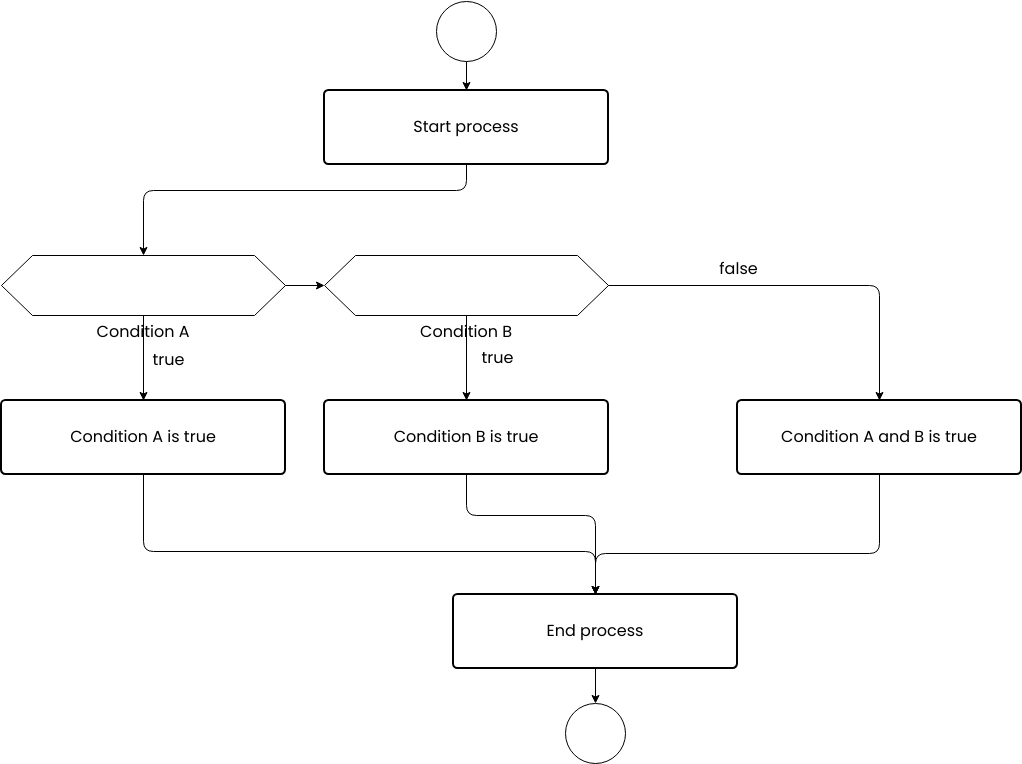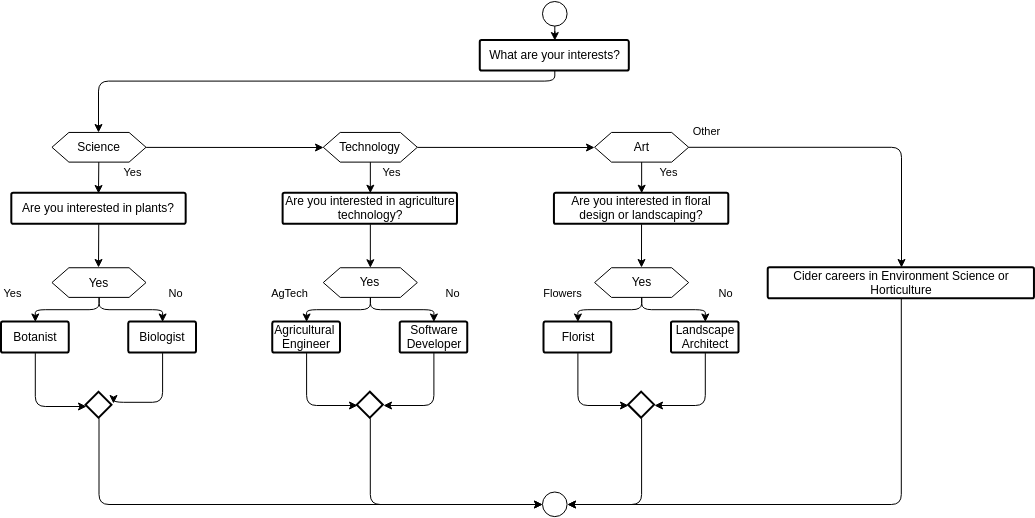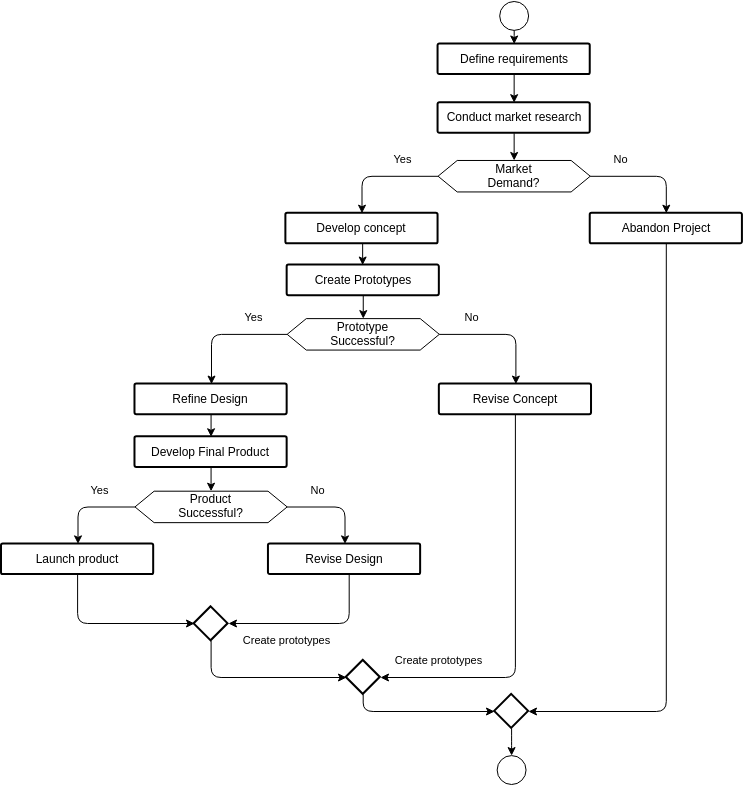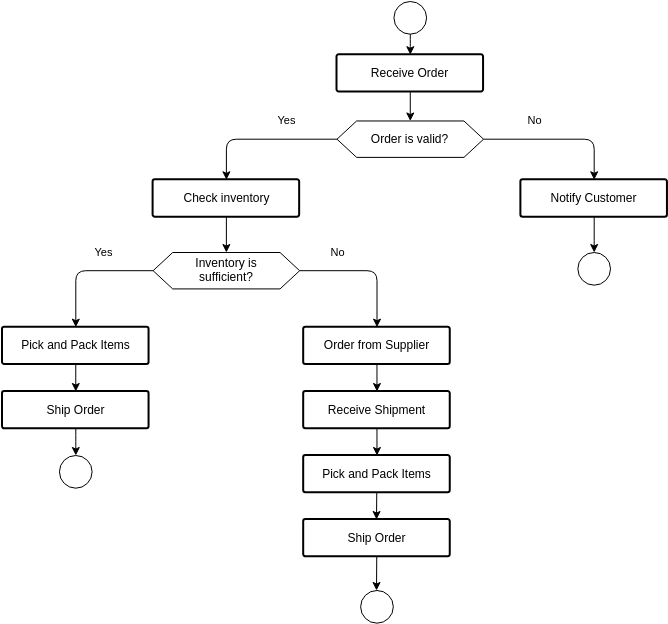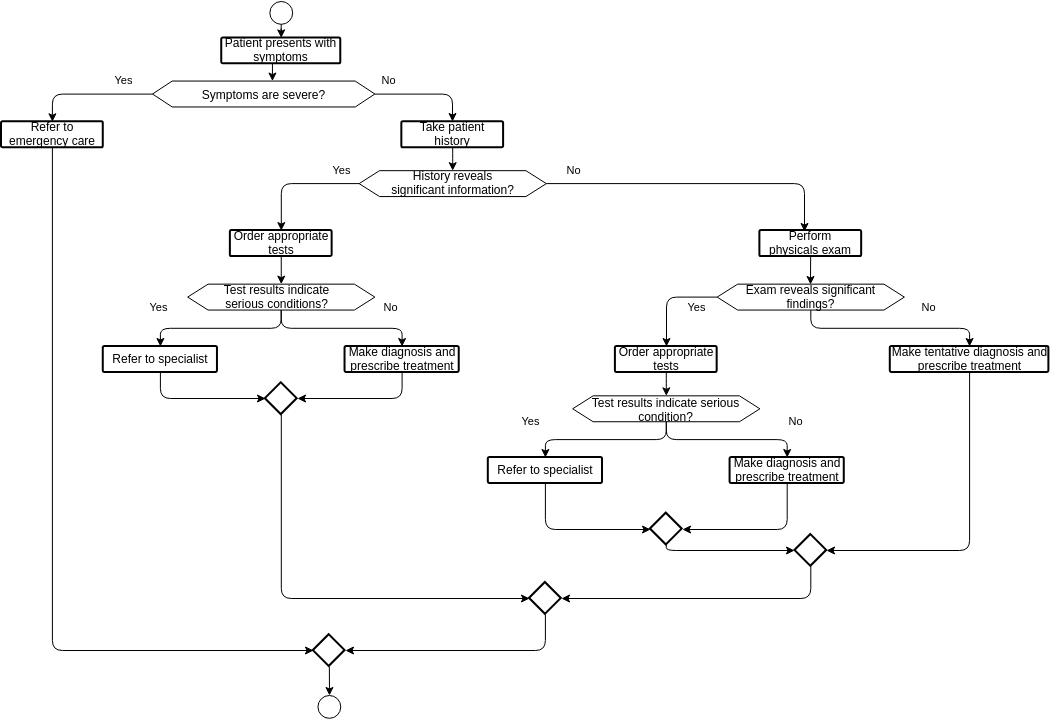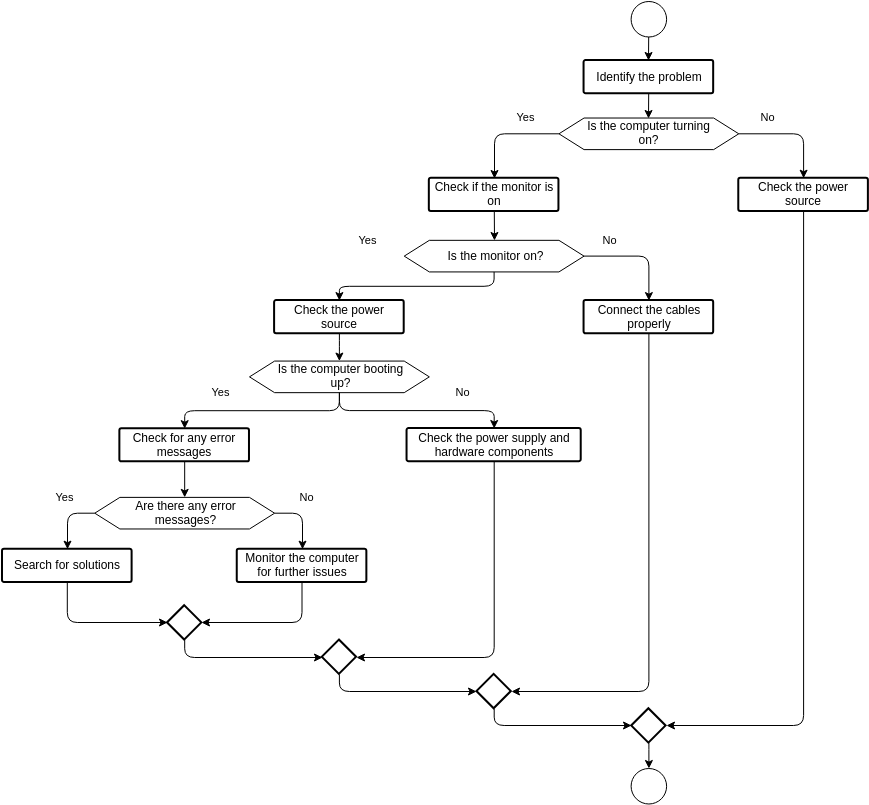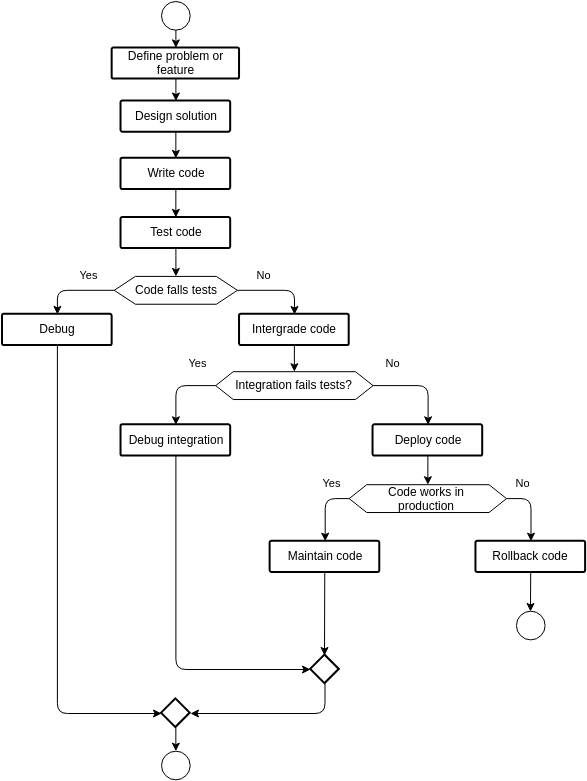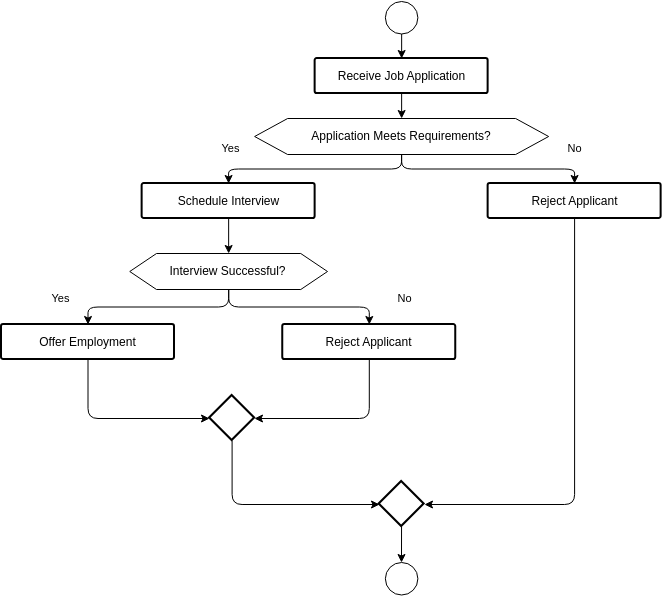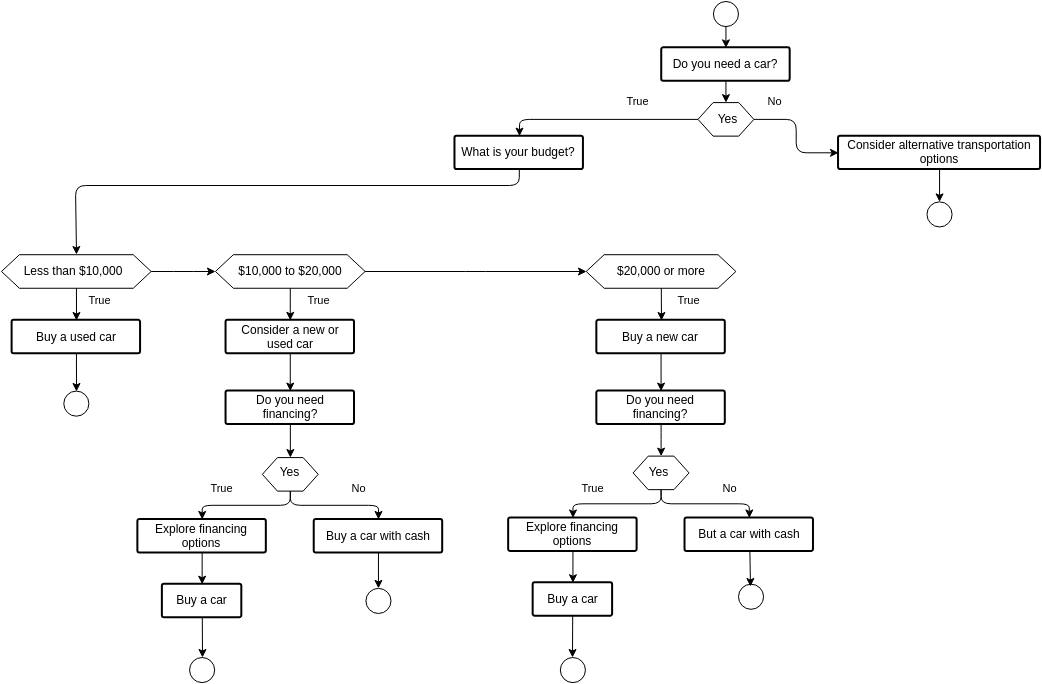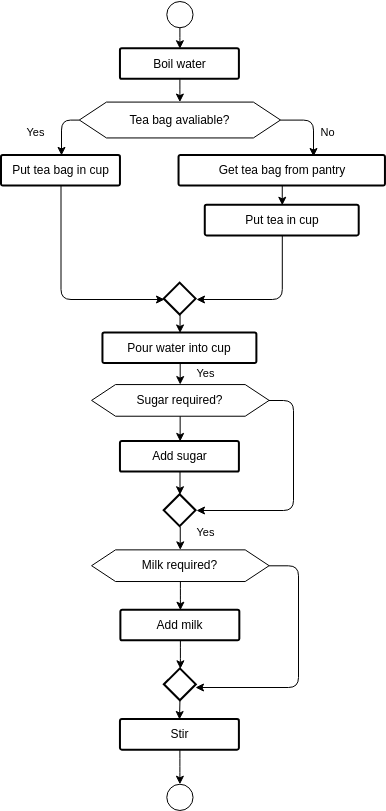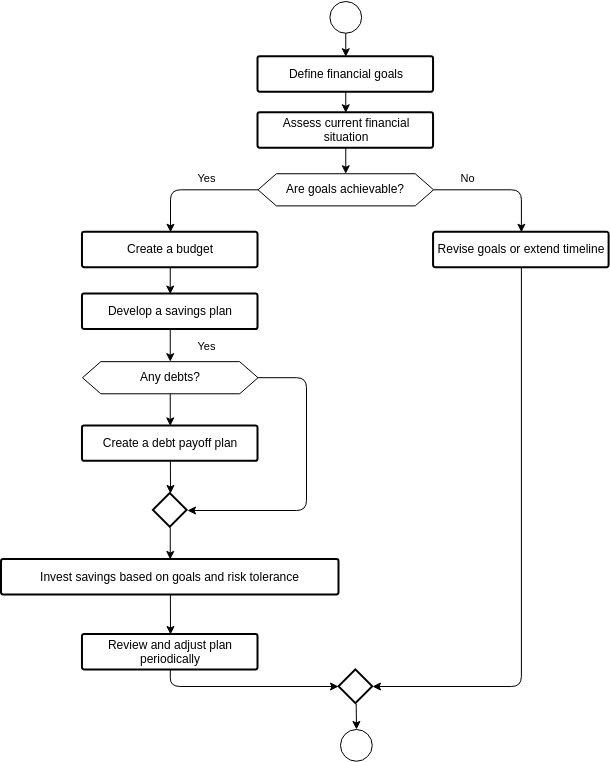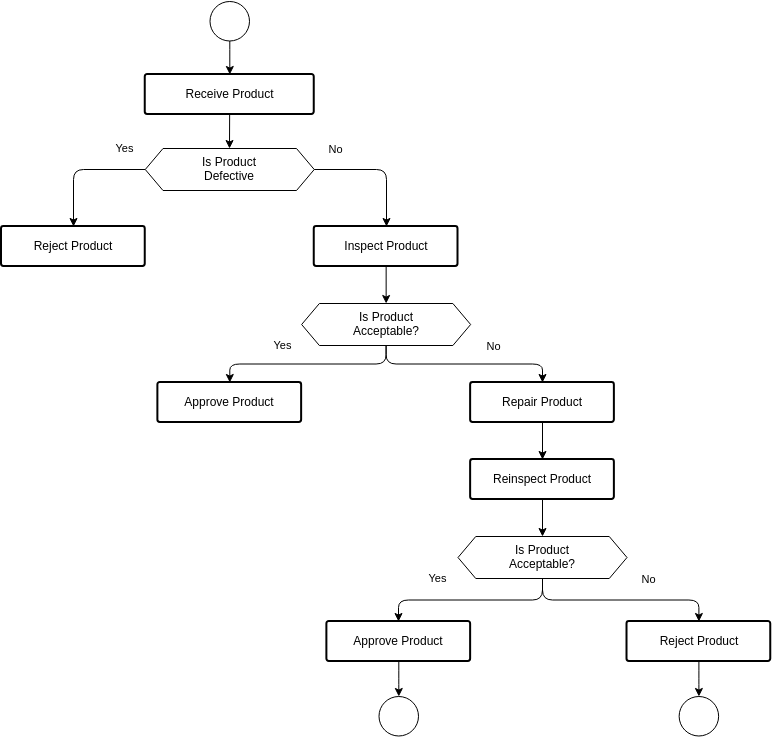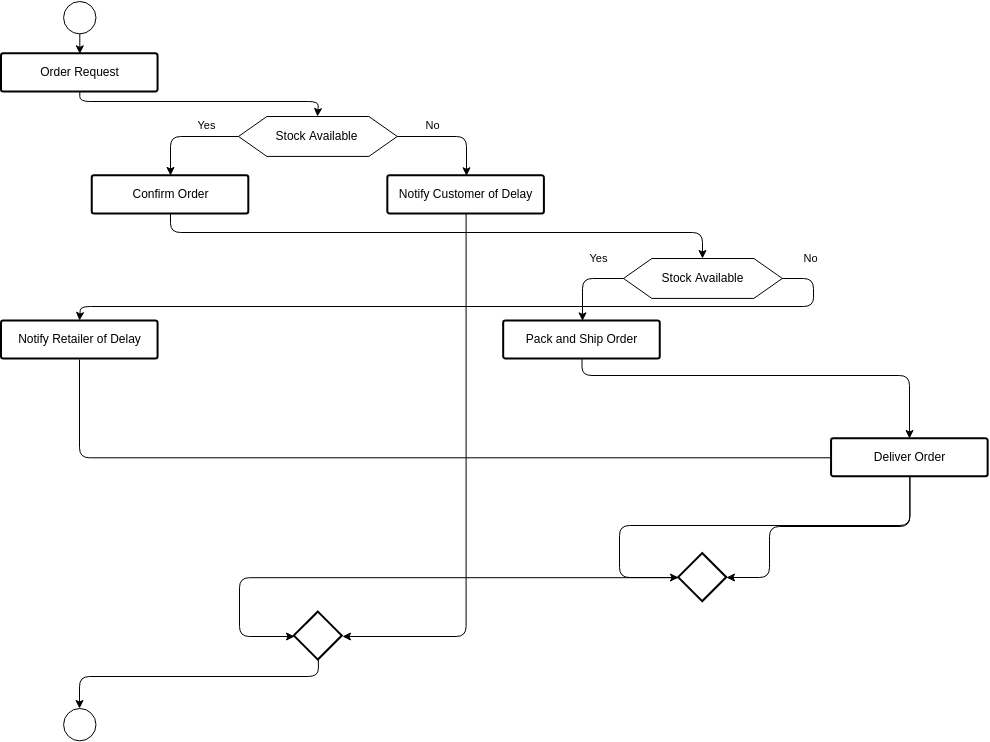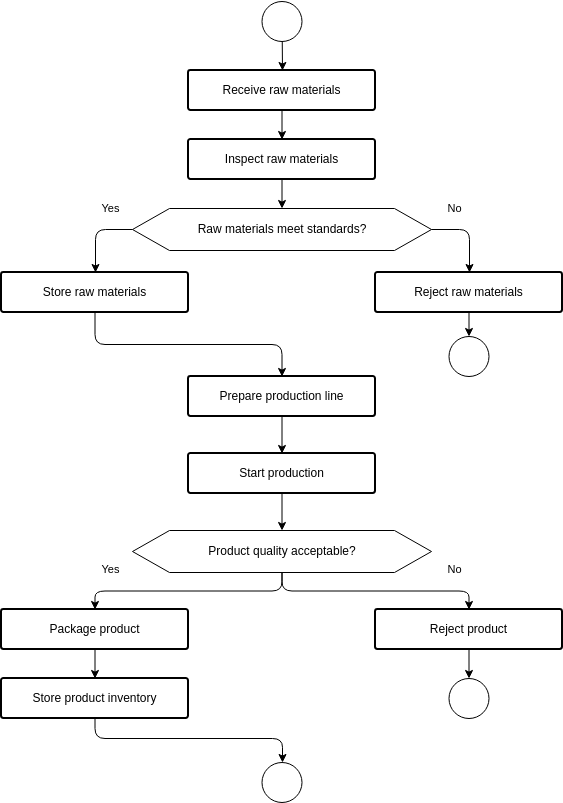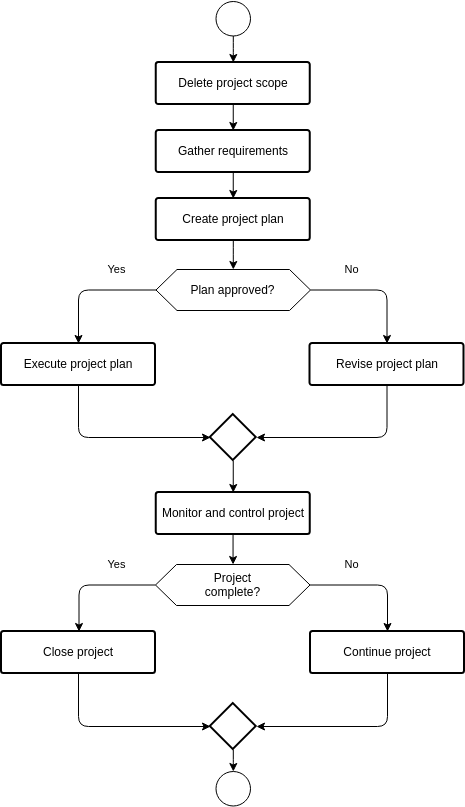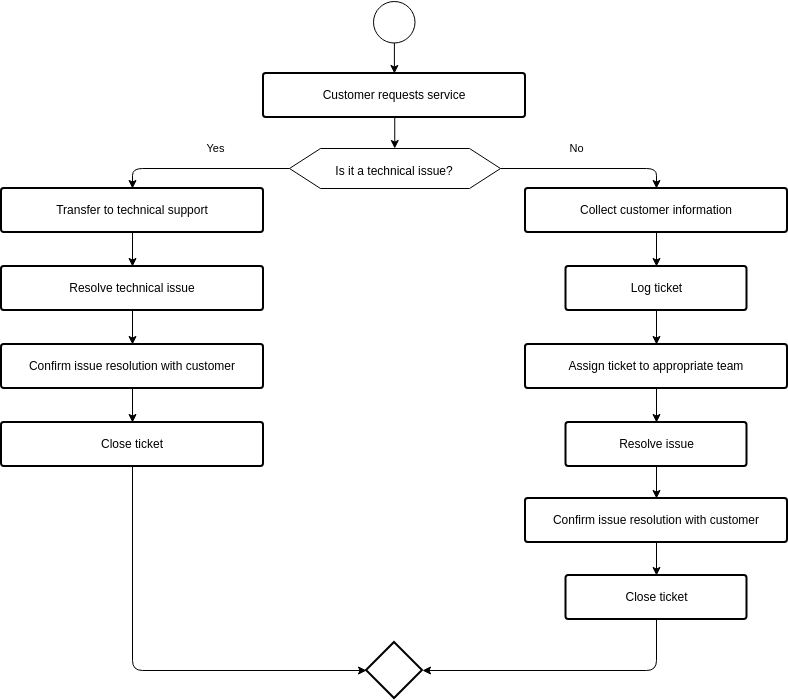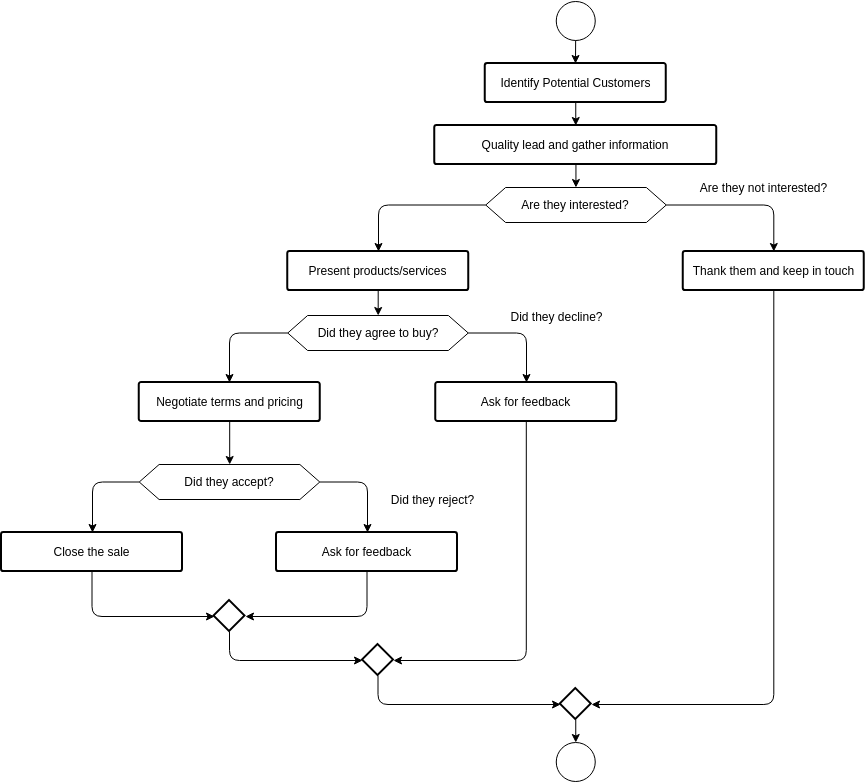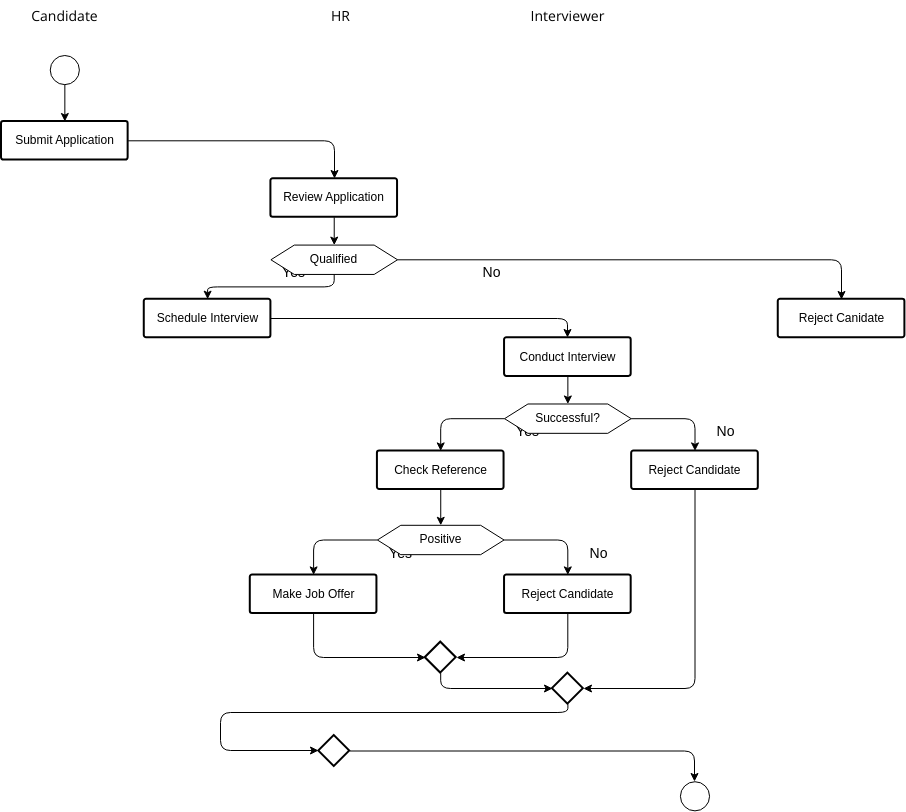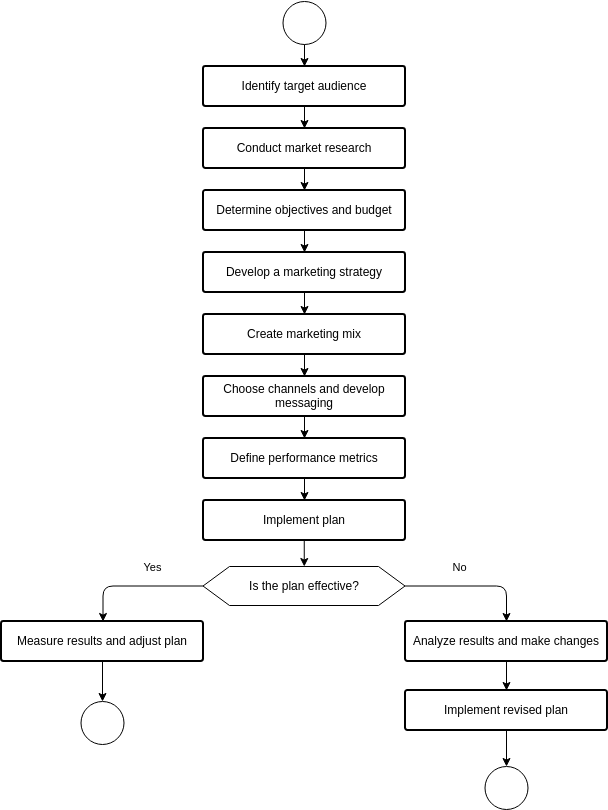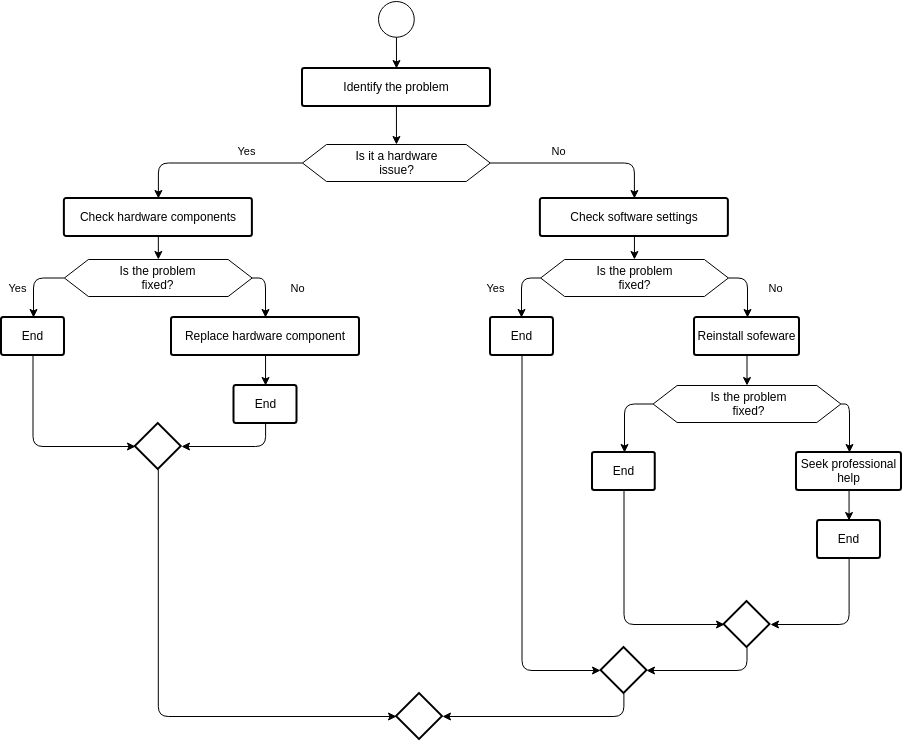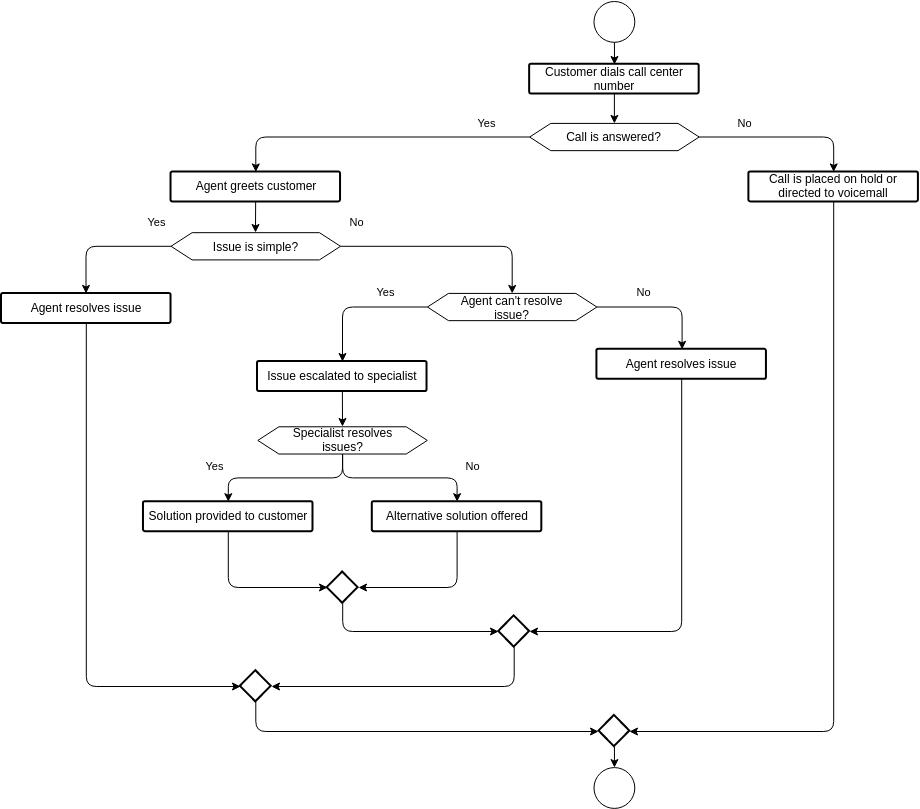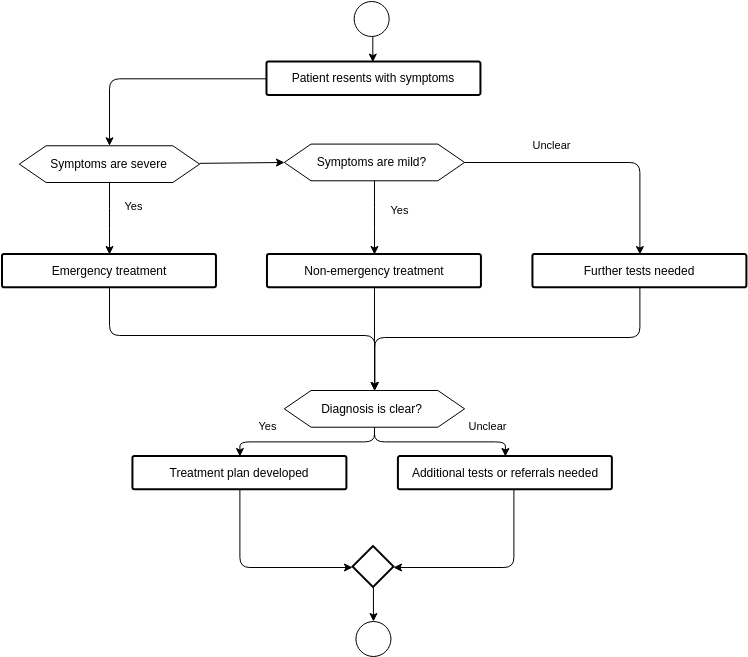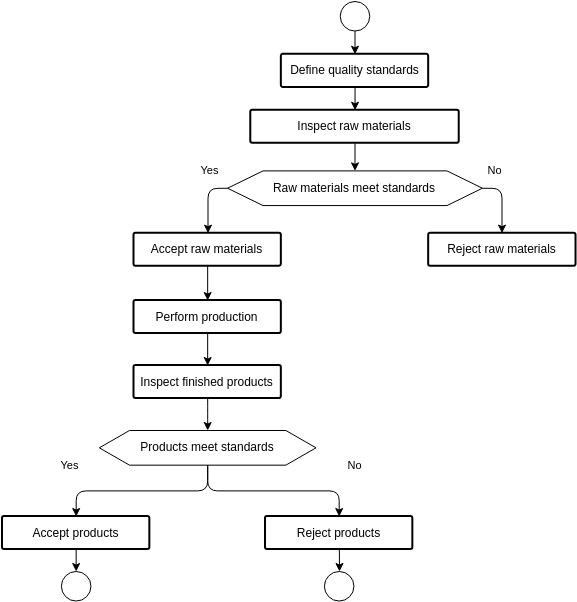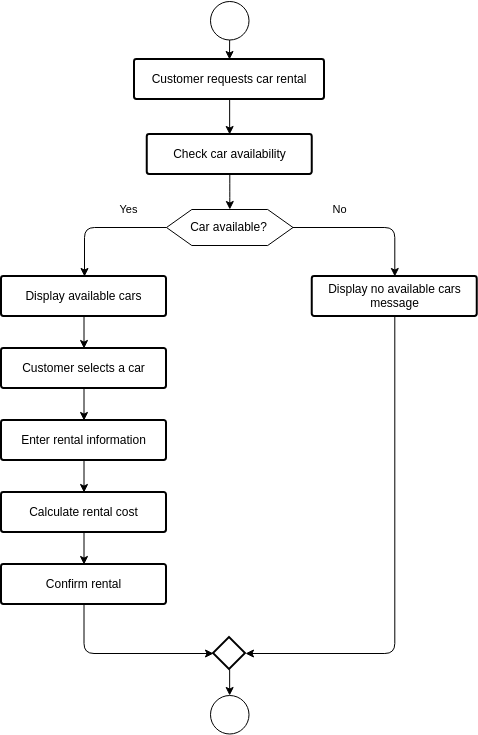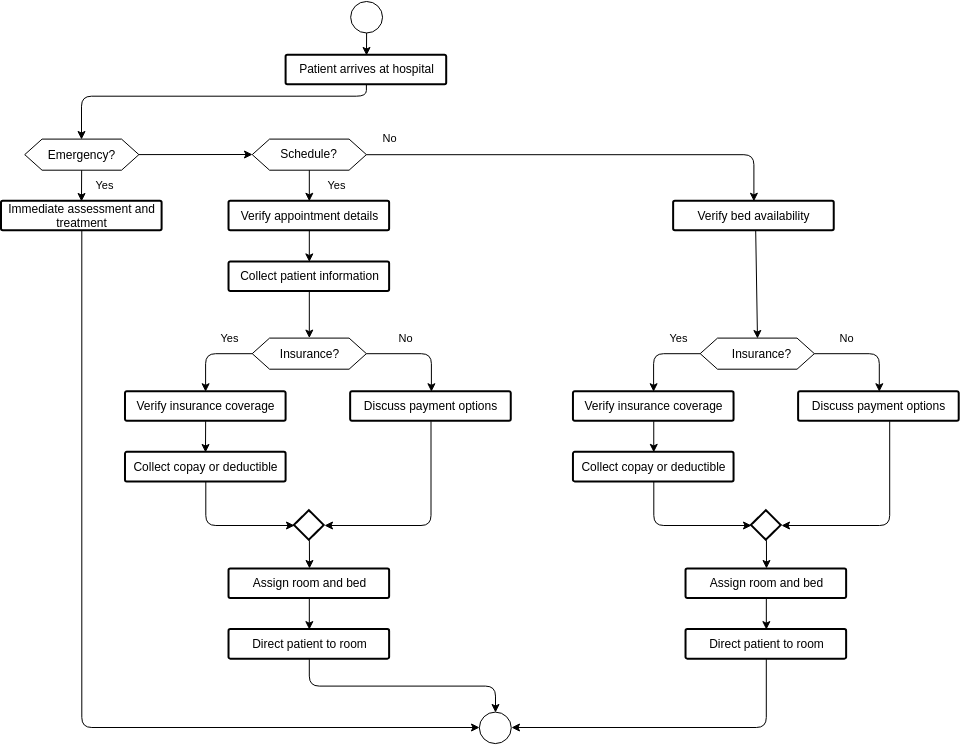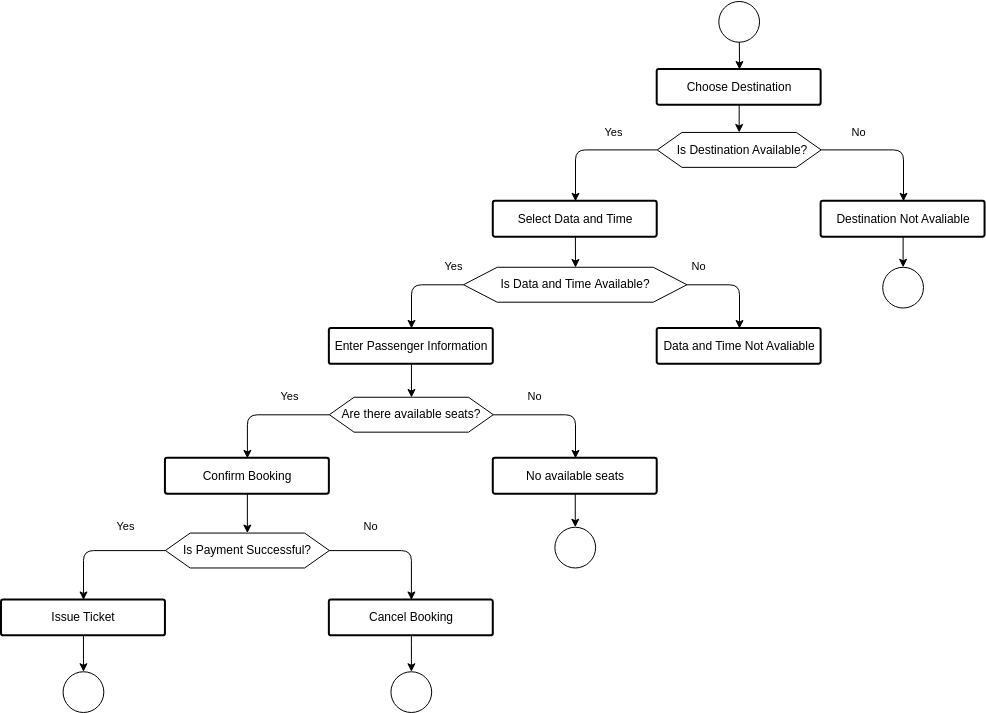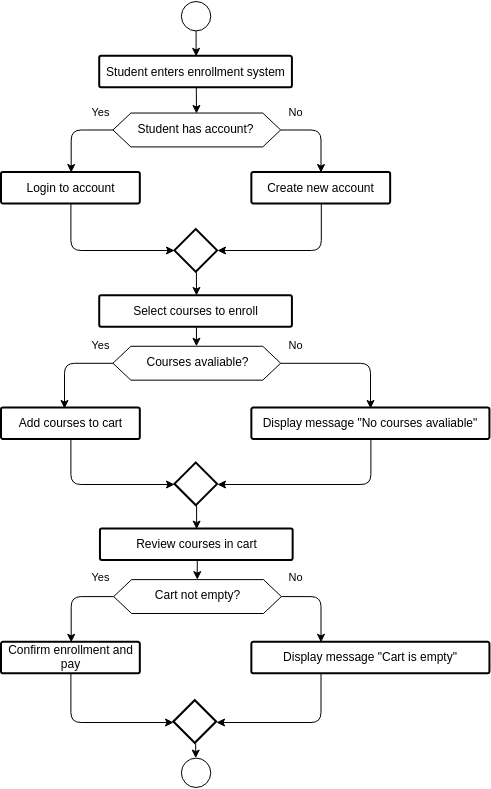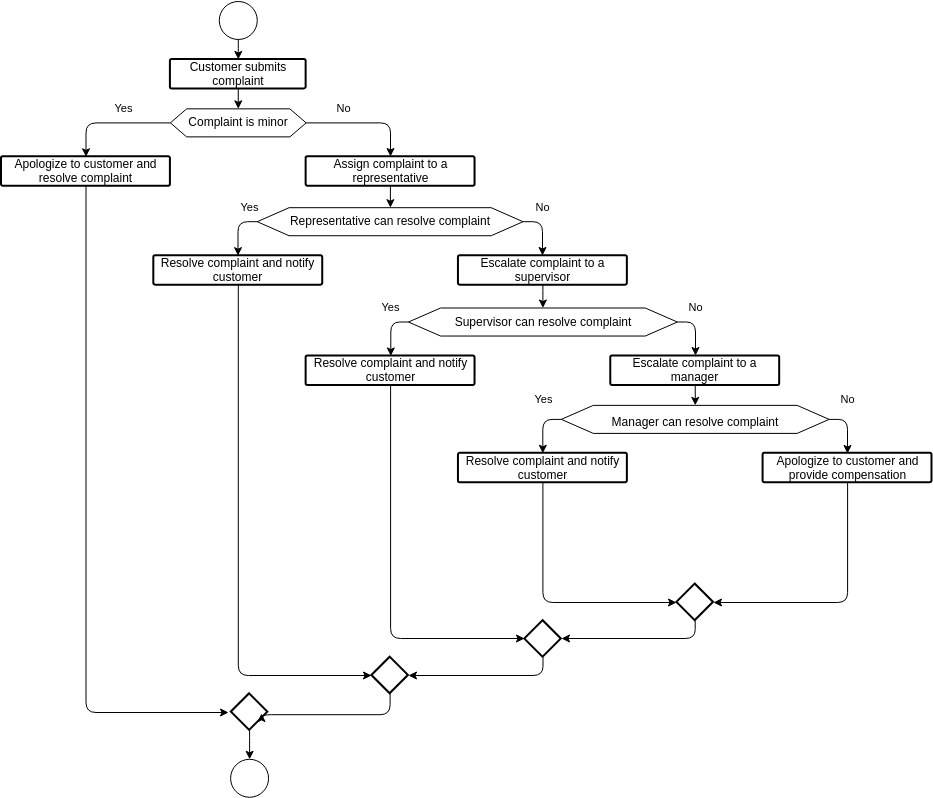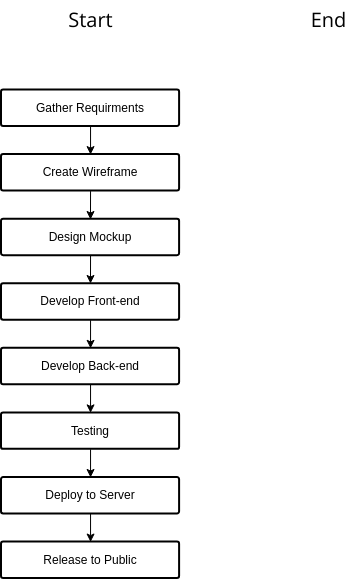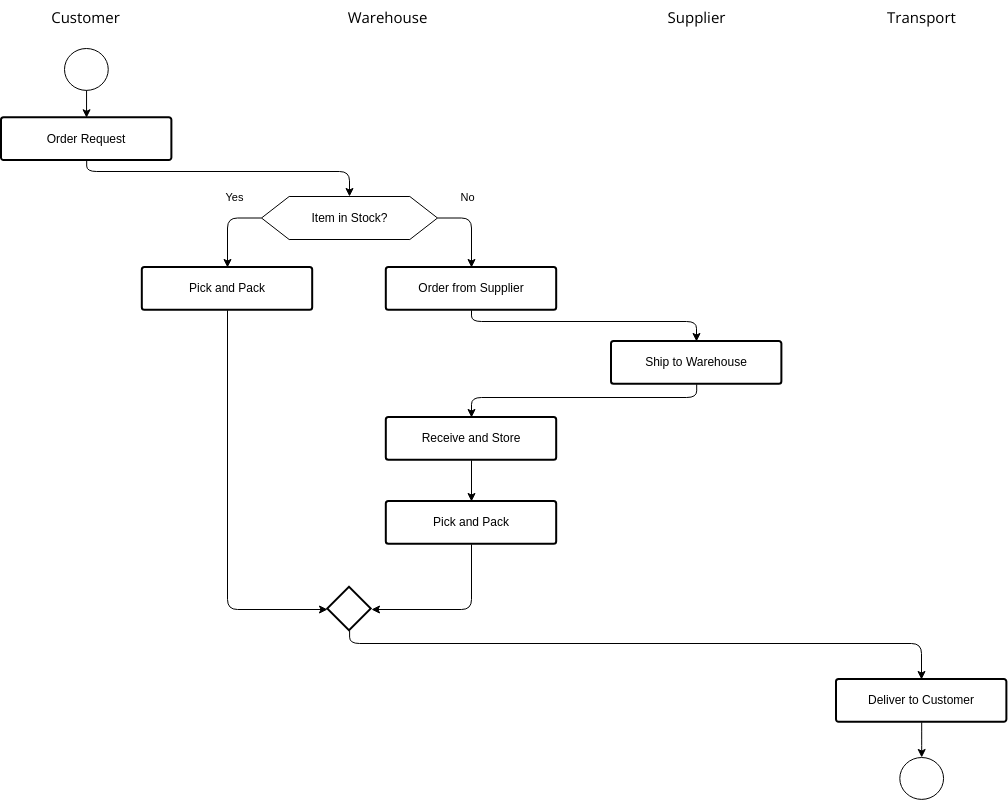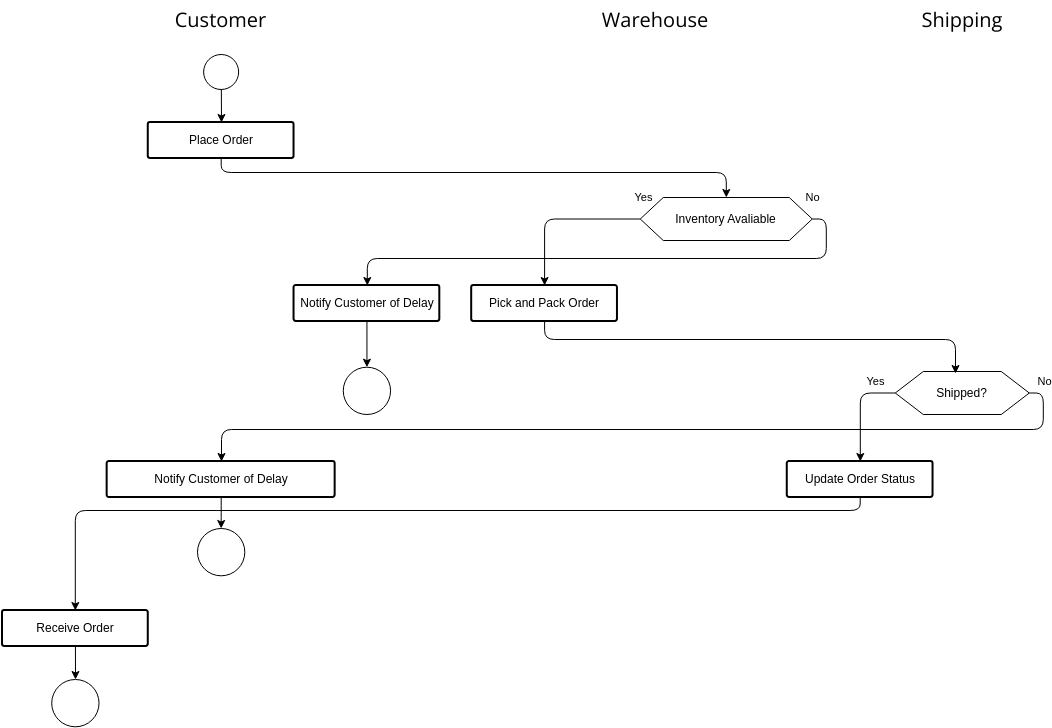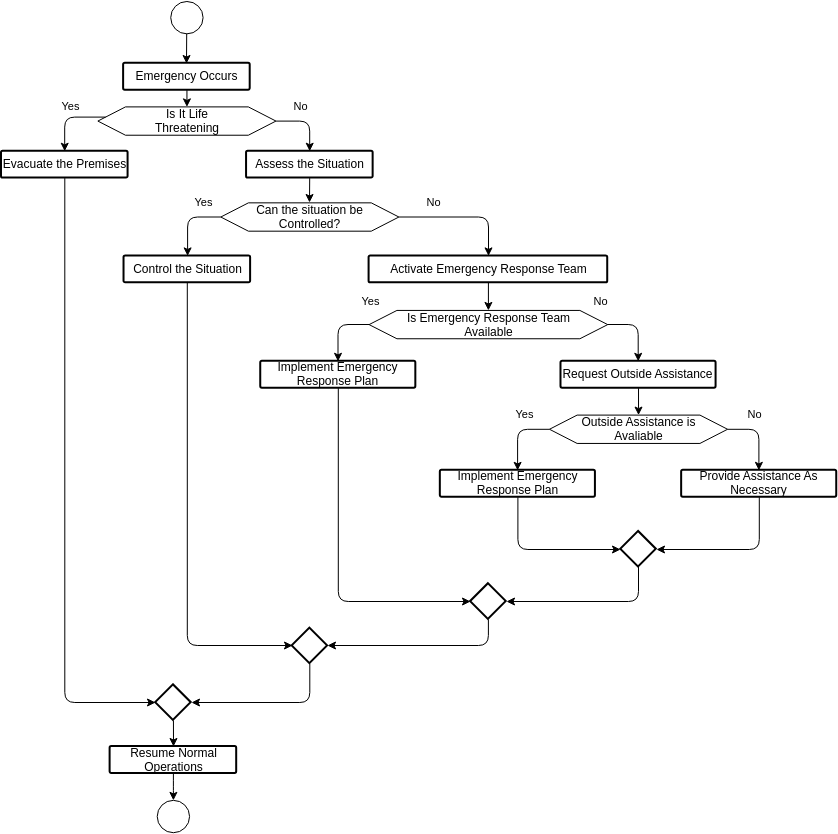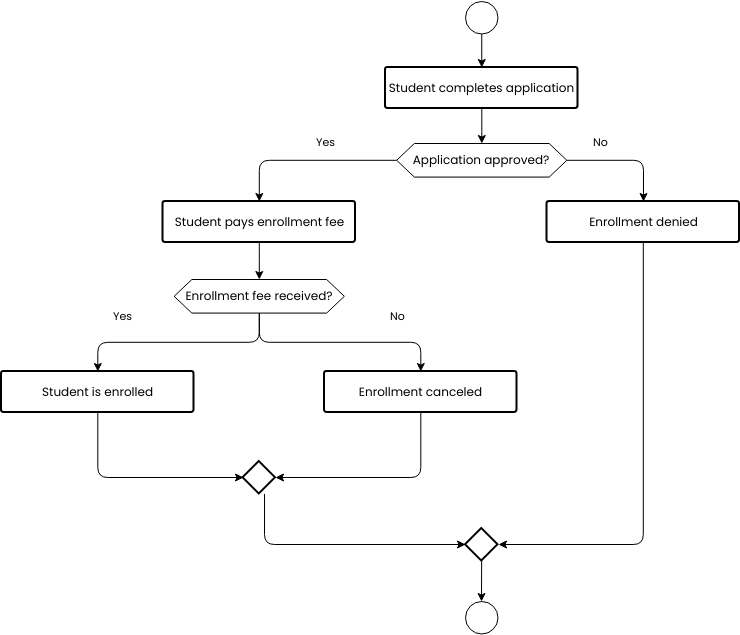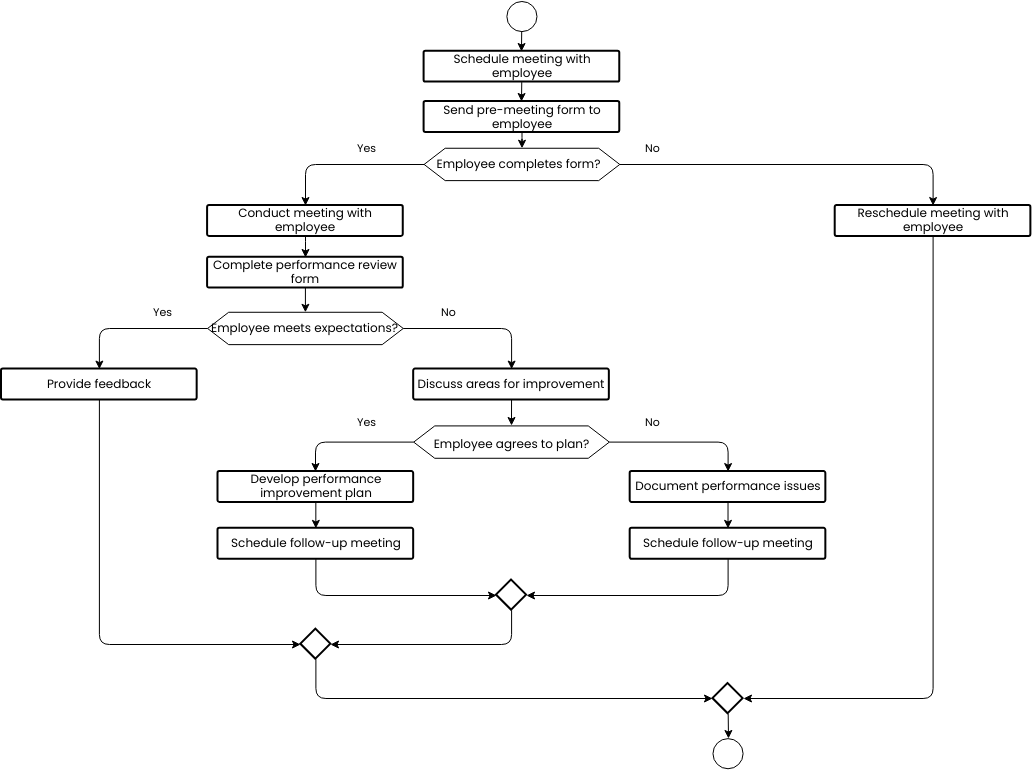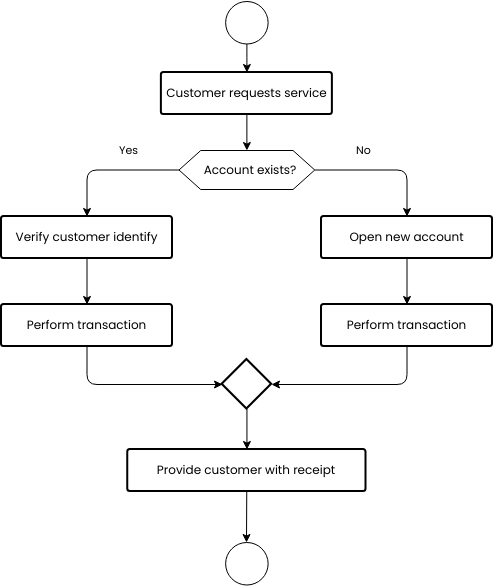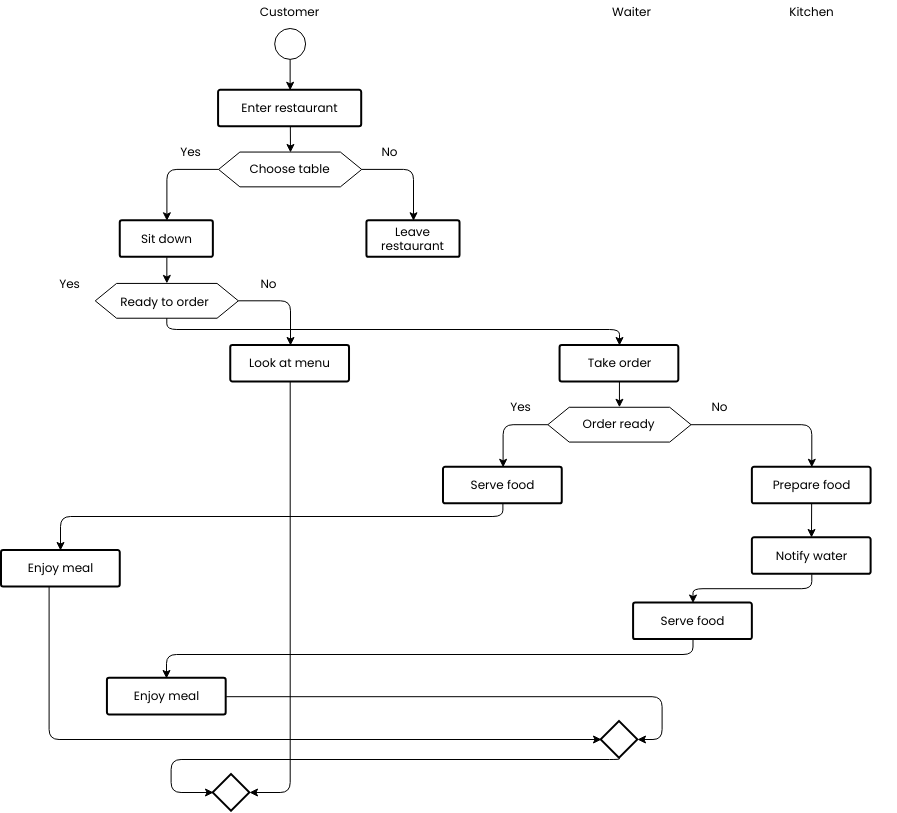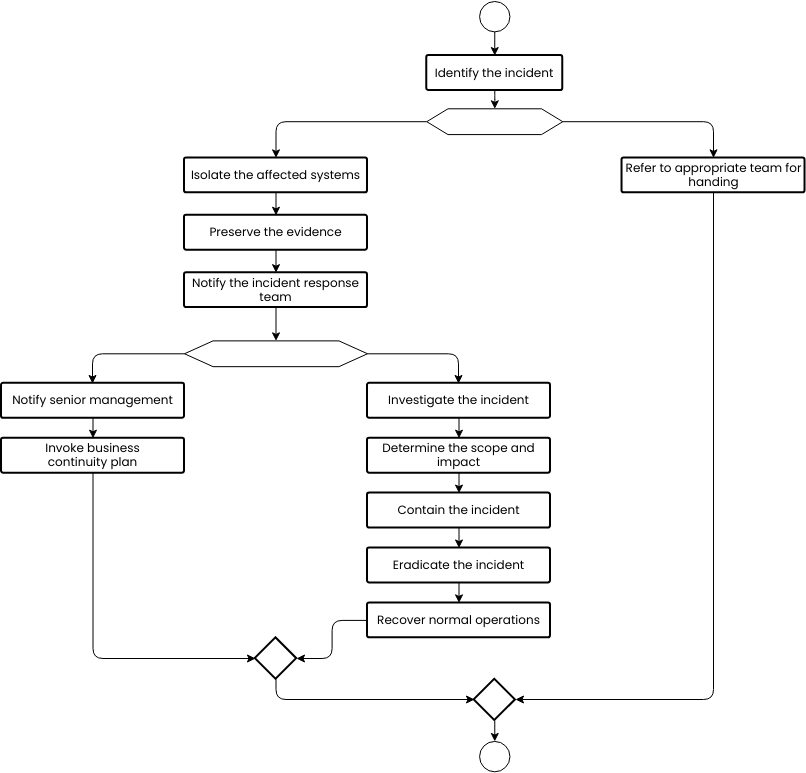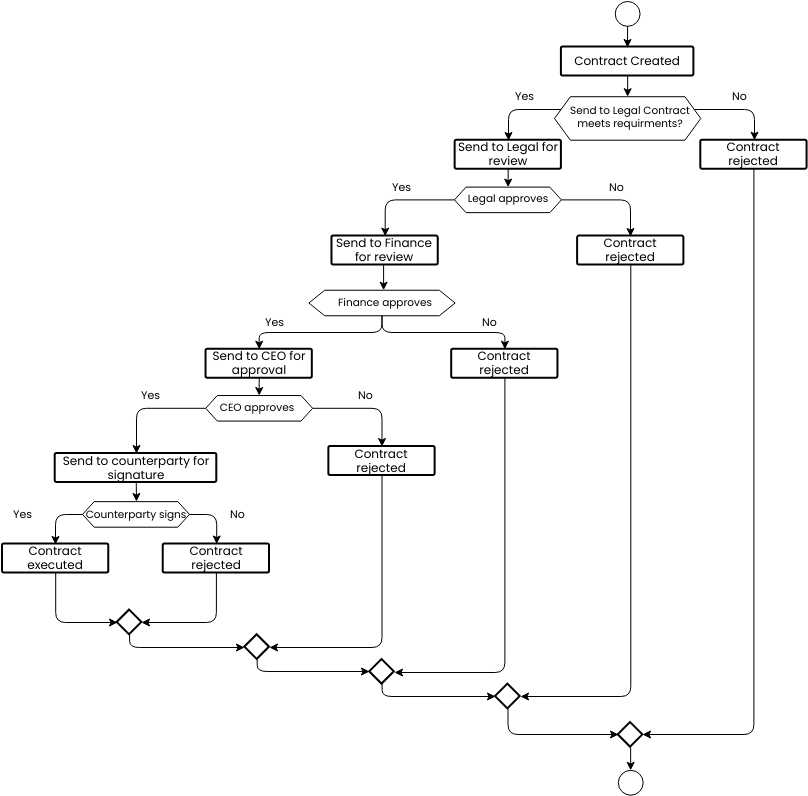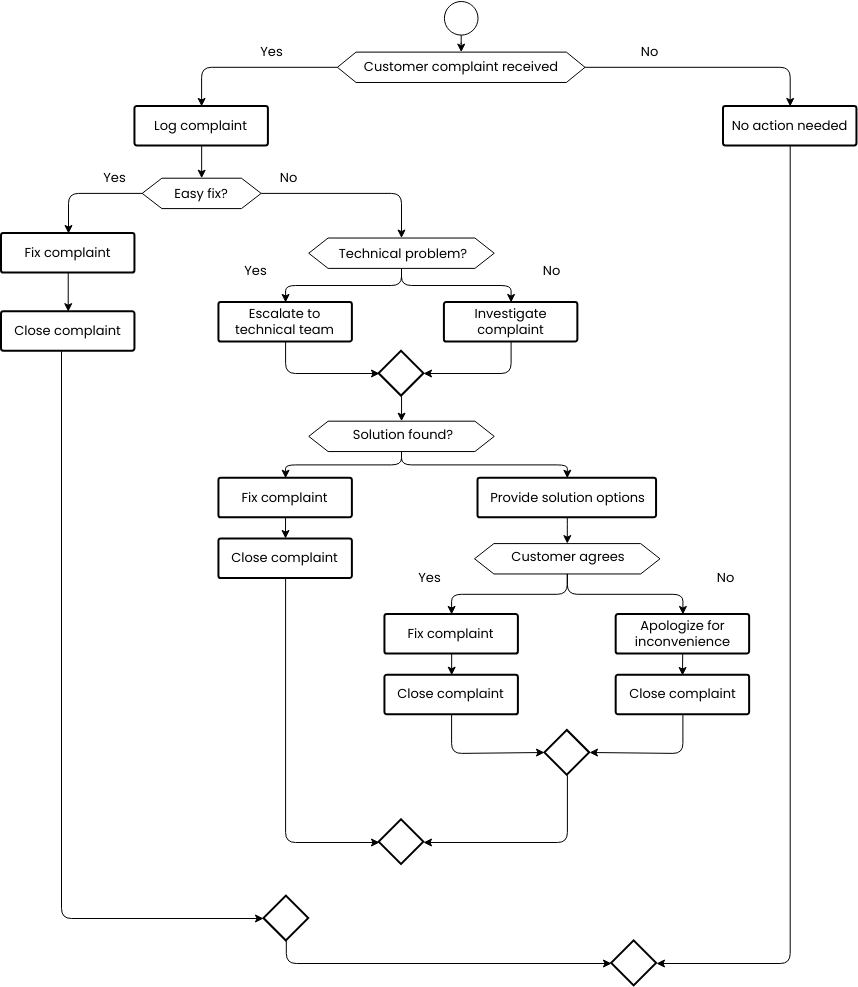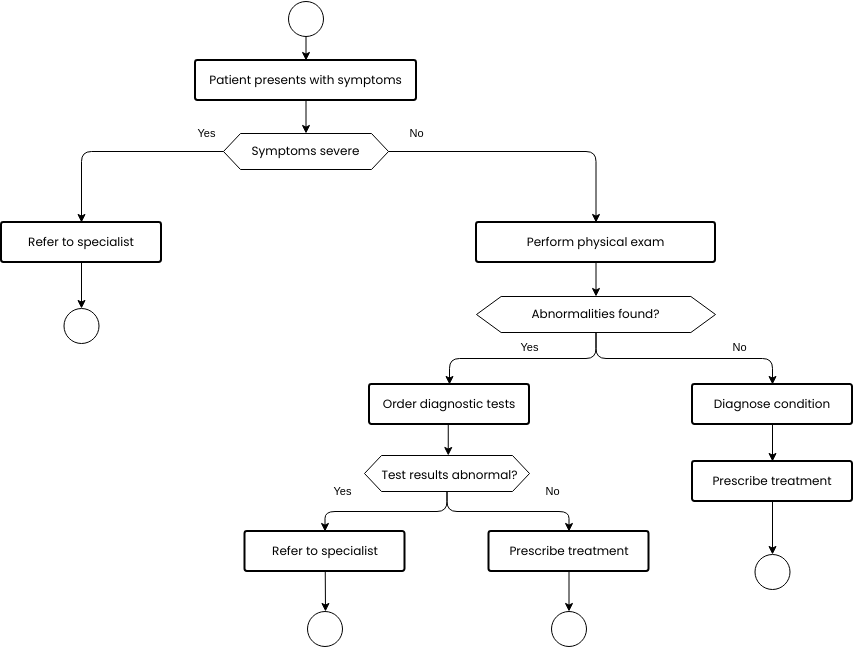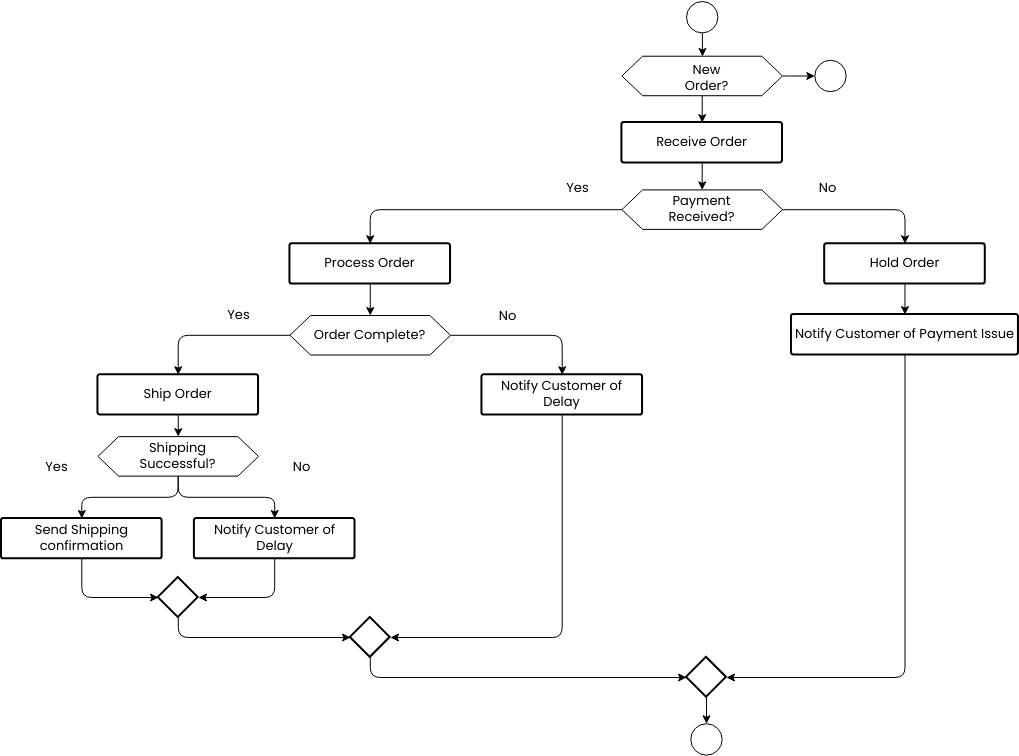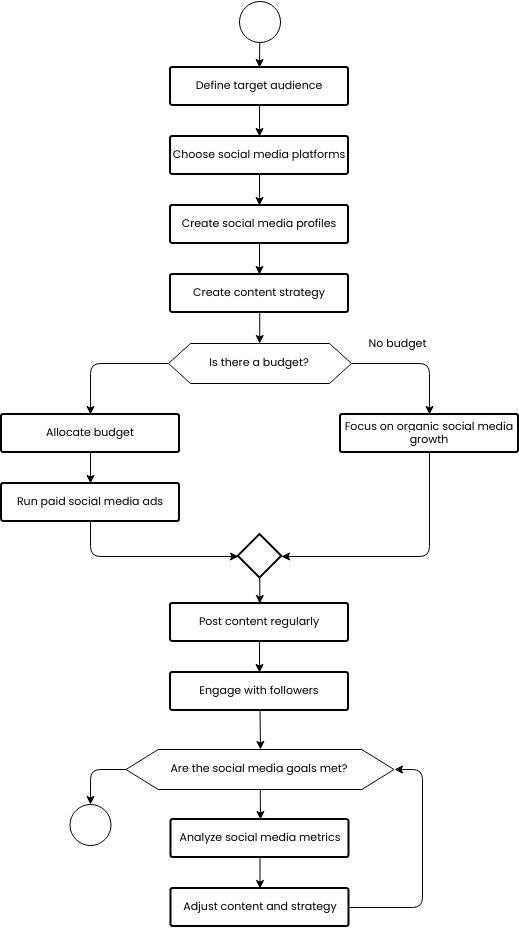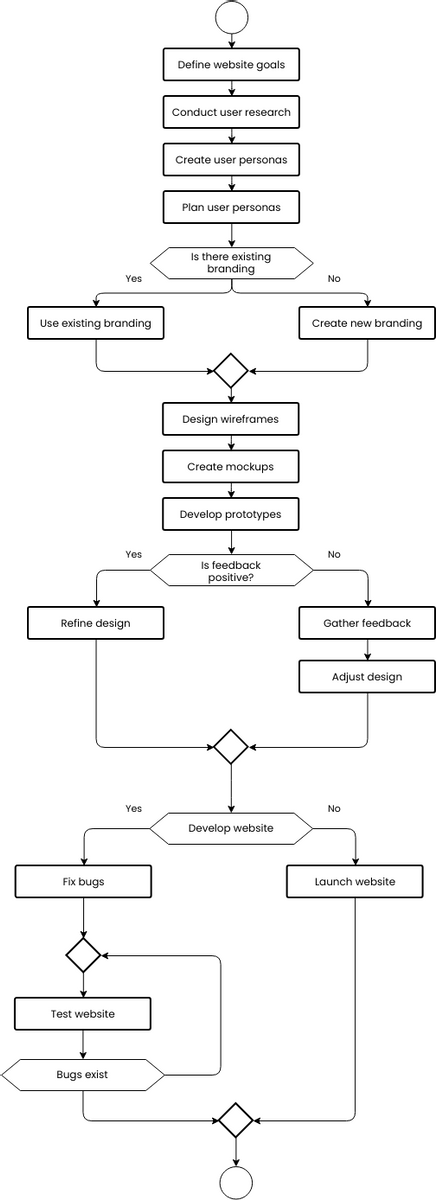A Process Workflow flowchart is a visual representation of the steps involved in completing a process. This flowchart outlines the steps involved in starting the process, evaluating two conditions, and ending the process. The four steps in this process workflow flowchart are "Start process", "Condition A is true", "Condition B is true", and "End process".
The first step in the Process Workflow flowchart is to start the process. This involves defining the scope of the process, identifying the goals and objectives, and outlining the timeline and budget for completion. Once the process has been started, the next step is to evaluate Condition A.
The second step is to determine whether Condition A is true. If it is true, the process workflow will proceed to the next step. If it is not true, the process workflow will end.
The third step is to evaluate Condition B. If Condition B is true, the process workflow will proceed to the next step. If it is not true, the process workflow will end.
The final step in the process workflow flowchart is to end the process. This involves completing any necessary documentation, archiving any relevant data, and ensuring that all stakeholders are informed of the completion of the process.
Benefits of creating process workflow flowchart
Creating a process workflow flowchart can provide several benefits for organizations. A flowchart is a visual representation of the steps involved in completing a process, and it can help to improve the efficiency, accuracy, and overall performance of the process.
One of the main benefits of creating a process workflow flowchart is that it provides a standardized process for completing a process. This can help organizations to ensure that processes are completed consistently and efficiently, reducing the risk of errors or inefficiencies. Additionally, having a visual representation of the process can help to improve communication among team members, reducing the risk of errors or miscommunications.
Another benefit of creating a process workflow flowchart is that it can help to improve the quality of the process outcomes. By providing a clear and concise process for completing a process, organizations can ensure that the process is completed on time, within budget, and to the satisfaction of all parties involved. This can help to build trust and confidence with stakeholders, ultimately contributing to the success of the organization.
Overall, a process workflow flowchart is an essential tool for managing processes effectively. It helps organizations to complete processes more efficiently, reducing response times and improving overall performance. By identifying potential bottlenecks or inefficiencies in the process workflow, organizations can make improvements that will save time and resources, ultimately contributing to the success of the organization.
Do you need templates for flowchart design? Right away, go to Visual Paradigm Online to look at some of your favorite customizable templates.
